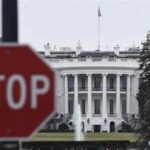This year marks the 50th anniversary of the issuance of the Shanghai Communiqué between China
and the U.S.
The document was released on Feb. 28, 1972 when then U.S. President Richard Nixon paid a
historic visit to China. It ended the prolonged estrangement between China and the U.S. and
started the process toward normalization of China-U.S. relations.
As the first joint communiqué between the two countries, the Shanghai Communiqué affirmed the
one-China principle. It was followed by the Joint Communiqué on the Establishment of
Diplomatic Relations between China and the U.S. and the August 17 Joint Communiqué, which
were issued in 1978 and 1982, respectively.
The one-China principle and the three joint communiqués remain the political foundation for
China-U.S. relations. Over the past half century, the relationship between the two countries has
made remarkable progress despite ups and downs, and they have both gained huge benefits from
their cooperation.
However, in recent years, with an aim to contain China, some people in the U.S. have been trying
to deny history and hyping the assertion that the U.S. policy of engagement with China has failed.
Such practice mirrors Cold War mentality. It negates the history of China-U.S. relations, the
achievements made by the two countries in the past 50 years, and the efforts made by the two
peoples to promote China-U.S. relations.
The recovery and development of China-U.S. relations was one of the most important event in the
development of international relations during the past 50 years, which has benefited the both the
two countries and the rest of the world. What’s the most important for the development of
international relations over the next 50 years to come is that China and the U.S. must find a right
way to get along with each other.
The commemoration of the 50th anniversary of the issuance of the Shanghai Communiqué offers
an occasion for the two countries to draw experience and wisdom from history, and bring China-
U.S. relations back to the right track as soon as possible.
To continue upholding the spirit of the Shanghai Communiqué, the two countries must advance
with history and keep their relations on the right track.
Fifty years ago, the “historic handshake across the vastest ocean” astonished the world. However,
China-U.S. relations have encountered adversity today. It is because some people in the U.S. are
not willing to admit China’s rapid development and take China as their major strategic competitor
and even an imaginary enemy out of their biased understanding. Such perspective reflects their
misjudgment in China’s development philosophy, as well as their ignorance for the development of
history.
To bring China-U.S. relations back to the right track, the U.S. must act with political wisdom and
courage, understand China and China’s development correctly, and abandon the Cold War
mentality and zero-sum games targeting at China.
To continue upholding the spirit of the Shanghai Communiqué, the two countries must properly
manage their differences according to the principle of seeking common ground while putting aside
differences.
In the Shanghai Communiqué, China and the U.S. admit that they have essential differences in
social system, but it has not affected the development of their relations. The spirit of seeking
common ground while putting aside differences reflected in the Shanghai Communiqué is
especially of practical significance in today’s situation.
Some people in the U.S. have intentionally underlined the ideological differences between China
and the U.S. to provoke confrontation. Such practice ignored the fact that the common interests
shared by the two countries are way bigger than their differences. It is against the aspiration of the
two peoples and the common interests of the world.
It’s not a big deal that China and the U.S. have differences and issues. What’s important is that
they must manage these differences and issues through sincere communication, so as to prevent
strategic misjudgment and avoid confrontation.
To continue upholding the spirit of the Shanghai Communiqué, the two countries must deal with
the Taiwan question according to the one-China principle.
The one-China principle, affirmed in the Shanghai Communiqué, was further confirmed and
developed in the Joint Communiqué on the Establishment of Diplomatic Relations and the August
17 Joint Communiqué.
At present, to contain China with the Taiwan question, the U.S. side has been trying to distort and
hollow out the one-China principle, which has brought serious danger to both the stability in the
Taiwan Strait and China-U.S. relations.
The reunification of China is an unstoppable trend. It will never be changed by any individual, any
force or any country. The U.S. must fully recognize that the Taiwan question is highly sensitive,
abide by the one-China principle and the three joint communiqués, and stop any practice that
challenges the one-China principle or undermines the peace and stability in the Taiwan Strait. It
must also resolutely and firmly oppose “Taiwan Independence,” and stop sending wrong signals to
“Taiwan independence” forces.
(Zhong Sheng is a pen name often used by People’s Daily to express its views on foreign policy
and international affairs.)



